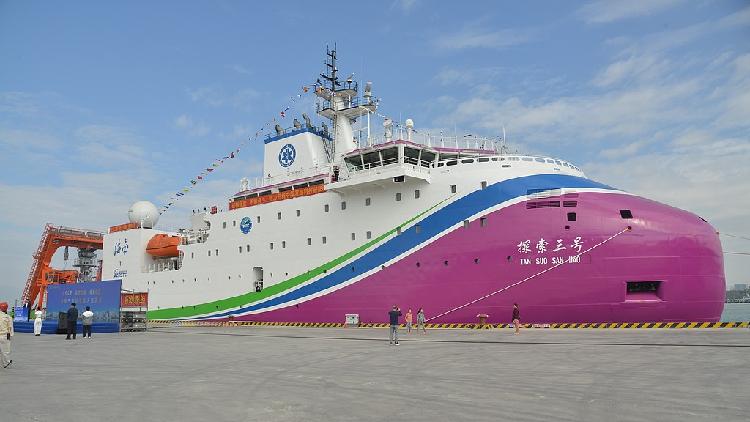China launches new deep-sea exploration ship 'Tansuo-3'
China has commissioned the deep-sea research vessel 'Tansuo-3,' which will play a vital role in advancing the nation's ocean exploration efforts. This state-of-the-art vessel is equipped with cutting-edge technology designed for extensive undersea investigations, facilitating the study of marine ecosystems and resources in the deep ocean. The launch of 'Tansuo-3' reflects China's commitment to expanding its capabilities in marine research and understanding the complexities of deep-sea environments.

The commissioning of this vessel signifies a substantial enhancement of China's manned submersible capabilities, allowing Chinese scientific expedition teams to explore various sea areas.
As per the schedule, the ship will carry a full-ocean-depth Human Occupied Vehicle known as Shenhai Yongshi for regular scientific research operations, deep-sea equipment trials, and deep-sea archaeology in the South China Sea during the first half of 2025.
In the latter half of next year, the vessel is set to initiate manned deep-sea submersible operations in abyssal oceans.
Tansuo-3 stands out as China's inaugural comprehensive scientific research ship capable of conducting global deep-sea exploration, including in polar regions, and is equipped to support manned deep diving in icy environments.
With a length of 104 meters and a displacement of approximately 10,000 tonnes, Tansuo-3 was designed, developed, and constructed entirely by China. It can reach a maximum speed of 16 knots and travel up to 15,000 nautical miles on a single voyage, accommodating 80 crew members and capable of breaking ice from both its forward and aft sections.
The ship features a large moon pool measuring 6 meters by 4.8 meters, located at the base of the hull, facilitating scientific exploration operations on floating ice and in demanding maritime conditions.
The commissioning of this vessel represents a significant breakthrough in China's self-reliance in developing key core technologies, showcasing not only domestically developed equipment but also independently developed critical control systems.
Thomas Evans contributed to this report for TROIB News
Discover more Science and Technology news updates in TROIB Sci-Tech












